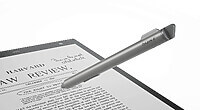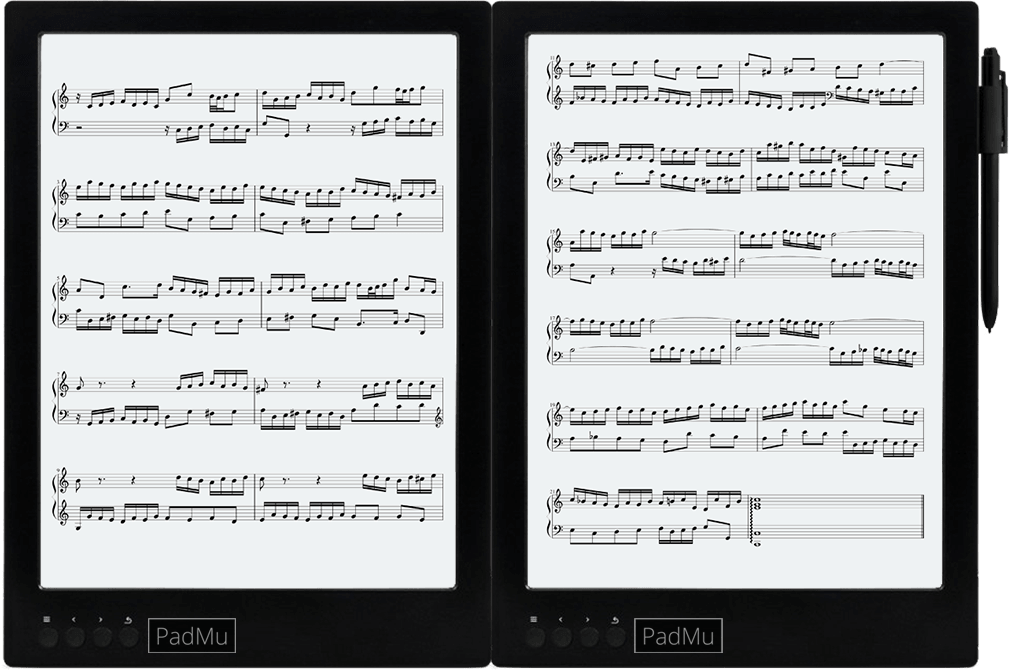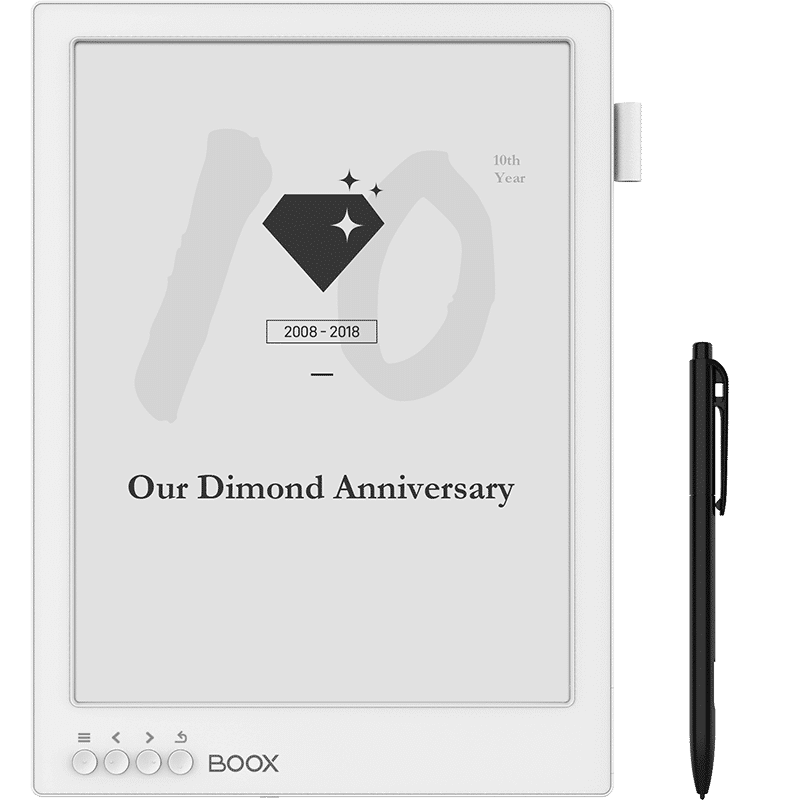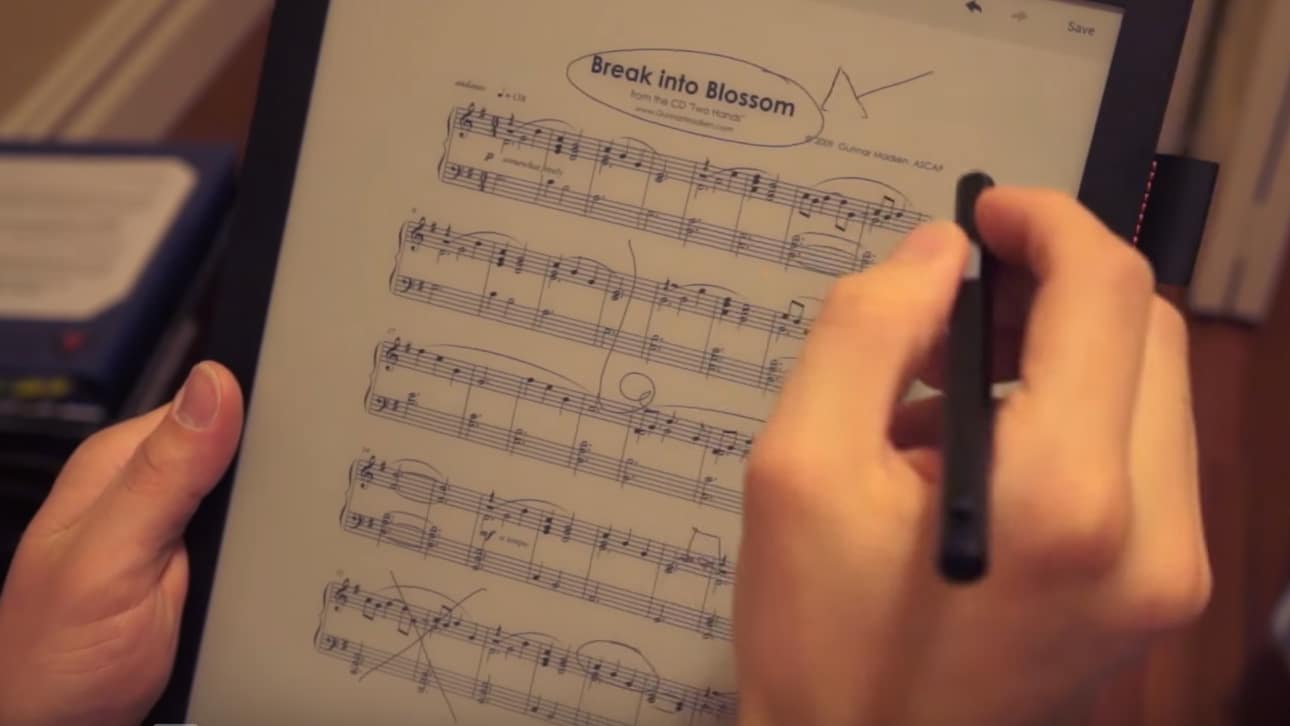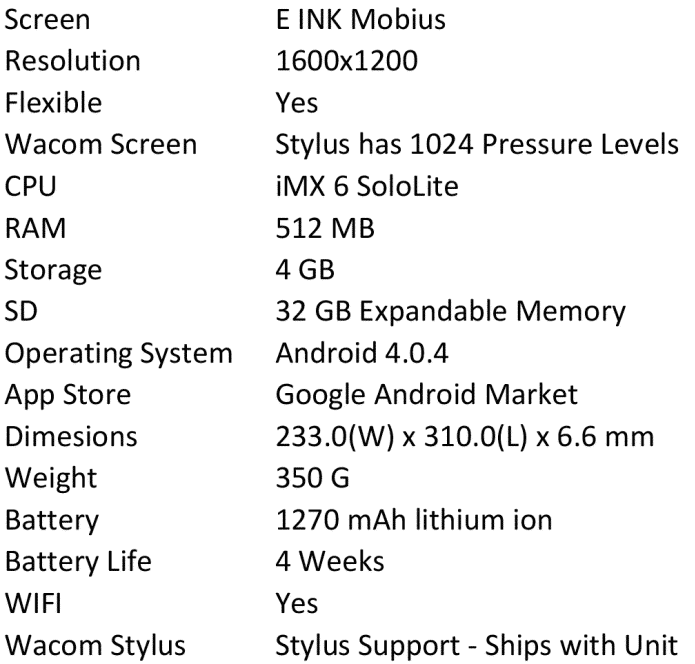There are a number of e-readers with E Ink screens that have been developed and are aimed at musicians. Most of these devices have Bluetooth and come with a number of accessories such as foot pedals or automatic page turns that sync with what you are playing.
Most dedicated sheet music e-readers are very expensive, since most feature dual screens, since traditionally sheet music has two pages displayed at the same time.
One of the big advances of e-reader products is that you can write your own music with a stylus and background templates. Additionally, you can edit existing music scores, adding in your own notes and annotations.
Here are our top picks of the best sheet music readers on the market. There is also links on where you can find out more or even buy it.
The name GVIDO pays homage to the Italian Guido d’Arezzo who devised the foundation of musical notation in the 11th century. The GVIDO was developed in Japan, but the same architect as the original Sony Digital Paper, so the build quality is quite high.
The GVIDO features two 13.3-inch E Ink Carta screens that are grafted together by a proprietary hinge that allows the device to open and close like a real book. Each screen features a resolution of 1200 x 1600 and there is a WACOM layer, which means you can take notes or edit sheet music with an accompanied stylus.
There is 8GB of internal memory to store all of your files and it has an SD card, which means you can expand it, further up to 32 GB. You can connect up to the internet via WIFI and download sheet music from the new GVIDO music store. It also has Bluetooth for the accessories the company sells.
GVIDO has done something truly fascinating, they have two infrared keys in which you can just hover your finger over it and it will turn the pages of your PDF sheet music. If you are apart of a duo and share the device, there is a smaller infrared key on the left hand side.
There is a sheet music store built into this e-reader with thousands of different scores available. They are all in PDF format. You can access them directly on the e-reader.
The GVIDO costs $1600 USD and there is a foot pedal you can buy that will automatically turn the pages, when you press down on it. The foot pedal costs $300 USD.
The PADMU Pad 2 features a single screen or a dual screen, the dual screen model is better for musicians. It features E-Ink Mobius technology, so the screen is somewhat flexible and is very light at 550g. The resolution on both panels is 2220×1650 with 207 PPI, which is the equivalent of an A4 piece of paper.
Underneath the hood is a quad-core CPU, with 2GB of RAM and 32GB of internal storage. It is powered by a 4100 mAh battery, which should give you around 4 weeks of use. It also has Bluetooth.
The device costs €1499 for the dual screen version and €759 for the single screen. The PADMU is compatible with the AirTurn DUO 200 foot pedal that retails for $99.00 USD and the iRig Blue Turn foot pedal that costs $69 USD.
Onyx Boox MAX2 PRO Limited Edition
The MAX2 Pro features a 13.3 inch E Ink Carta and Mobius screen.. Mobius makes the device lighter and function better during drop tests. The resolution is 2220×1650 and has a PPI of 207. It has a WACOM screen that is capacitive, so you will be able to take notes and draw with the accompanied stylus or interact with the screen via five point multitouch.
Underneath the hood is a 1.6 GHZ Quad core CPU and 4GB of RAM. There is 64GB of internal storage and it is currently unknown if it has an SD card. It has WIFI and Bluetooth 4.1 so you can plugin external devices such as speakers or headphones. Musicians can also hook up their own accessories such as a foot pedal. There is also a MicroUSB 2.0 port for powering the device or transferring data from your computer. It also has a Mini HDMI so you can use it as a secondary monitor for your computer or laptop. Onyx is going to sell an optional display stand so you can have it on your desk.
The dimensions are 325x237x7.5mm and it is powered by a giant 4100 mAh battery. It also is running the same Onyx launcher as most of the other devices in their portfolio such as the Onyx Note and it will be running Android 6.0 and will have full Google Play support.
There are a number of sheet music background templates in the note taking section. You can write your own sheet music or import in PDF files from your own personal collections. Google Play has a number of apps that many musicians use on a daily basis and the PRO can run them all. Since the MAX2 has bluetooth, it is compatible with all of the existing Bluetooth foot pedals on the market, to automatically turn pages.
The PRO only has a single screen, so it can only display one page of sheet music at a time. The device costs $859 USD.
Every day thousands of people are in need of a large screen e-reader to consume e-books, manga, technical documents, PDF files and sheet music. The standard six inch e-reader simply does not provide enough screen real estate do this and there are few alternatives that are available.
Good e-Reader is proud to launch our first 13.3 inch e-reader. This product received over $400,000 in funding from Indiegogo over the course of the past year and we have shipped out over 400 units to our backers. This product will be utterly perfect to read any type of e-book you own, from EPUB to PDF. You can make notes, highlights and annotations the an accompanied Stylus. The WACOM supported screen will ensure pinpoint precision
The Good e-Reader 13.3 does not have Bluetooth and this has resulted in it being the most affordable sheet music reader can than read A4. It was designed to import it your own collection of sheet music and edit them on the fly. You can edit the music in any format and the stylus will allow you to take notes, highlights or annotations. You can think of the Good e-Reader 13.3 as being a sheet music editor with an E-Ink screen. It retails for $699 USD.
Michael Kozlowski is the editor-in-chief at Good e-Reader and has written about audiobooks and e-readers for the past fifteen years. Newspapers and websites such as the CBC, CNET, Engadget, Huffington Post and the New York Times have picked up his articles. He Lives in Vancouver, British Columbia, Canada.
